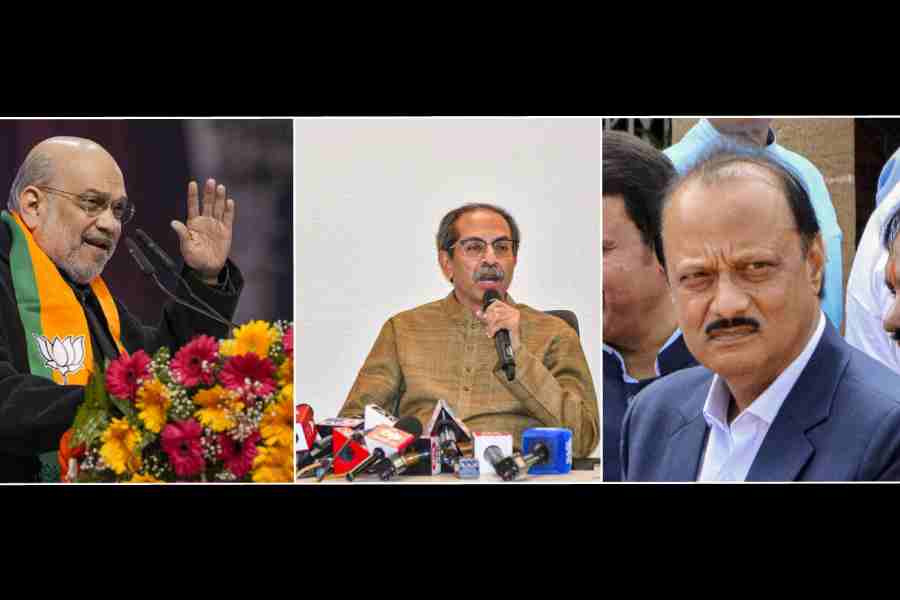Book: Black River
Author: Nilanjana S. Roy
Publisher: Westland
Price: ₹799
The rural hamlet of Teetarpur lay smugly perched somewhere between the Aravalli foothills and obscurity, skirting the dusty edge of the Delhi-Haryana border and commonplaceness. If banality is an art, then Teetarpur took pride in having long perfected its anonymity, savouring the fact that the “village is not known to have inspired a line in a film song or even a mithai”, “never produced so much as a celebrity or a famous politician”. However, its well-preserved insignificance goes for an overnight toss when eight-year-old spirited Munia pays a grisly price for accidentally witnessing a murder. Chand discovers his daughter’s limp and lifeless body hanging from a jamun tree, “livid rope marks” still fresh around her thin neck. The prime accused is Mansoor Khan, the village lunatic with a traumatic past, who is conveniently found hobbling at the site of crime but there is more than meets the eye as the cynical and perennially over-worked village sub-inspector, Ombir Singh, realises when he sets out to solve a cold-blooded crime that gets murkier by the day to include some of the most influential names in the village as potential suspects. Nilanjana S. Roy’s Black River starts off by ticking all the right boxes for desi noir fiction but the strength of the work primarily comes from its emotionally-invested characterisation, visually evocative geographies, and trenchant socio-political critique.
The murder mystery is complemented and at certain points even bested by parallel narratives that emerge through Ombir’s personal battle against his inner demons, the affection, loss and longing of Chand’s attachment to Munia, but principally through a retrospective of Chand’s early life in Delhi as a migrant labourer and his unlikely bonding with Badshah Miyan, the foul-mouthed yet tender-hearted butcher, at whose meat shop in Mehrauli he finds employment. Equally significant is Chand’s narrative trajectory of “sweat, dust, shared hardship” with Khalid and Rabia, the couple from rural Bengal and their growing friendship against Delhi’s changing urban and political landscape in the Nineties. Their nomadic life on the sandbanks of the Yamuna after their ramshackle half-room at Wellcome Colony is destroyed as part of a beautification drive gives Roy the leisure to poetically reflect on not just the poignant ebbs and joyous flows of their daily lives but also on the changing riverscape reiterated in the title of the book itself — “For the most part, Delhi turns its back on her, staining her swollen body with its ashes and garbage and sewage, choking her with the city’s waste, its discards, its corpses and diseases. Most inhabitants notice the river goddess’s turbulence only when she floods her banks, returning to the city all that it had discarded and dumped in her once-clear waters.”
Not all these narratives reach closure with the exception of the Chand-Munia track as he finally “lets his daughter go, into the light”, whispering a prayer to the silent forest valley and the listening white mountains. Rabia and Chand’s moment of tenderness does not achieve its expected conclusion and Ombir’s personal doubts remain unsettled. The mystery of Munia’s murder is finally resolved though there are no proverbial red herrings that might confuse the reader from guessing the murderer’s identity much before the author finally divulges it. Hence, the denouement might seem too laboured and unnecessarily prolonged. However, to quibble about this would be to miss how successful Roy is in keeping the thematic core of the whodunit intact even as she deliberates on tangential issues such as human relationships, religious intolerance, class bias, ecological catastrophes, child abuse or the migrant crisis. Much like the flowing waters of the Yamuna that forms its central motif, Black River resists being compartmentalised into any one particular generic category.










